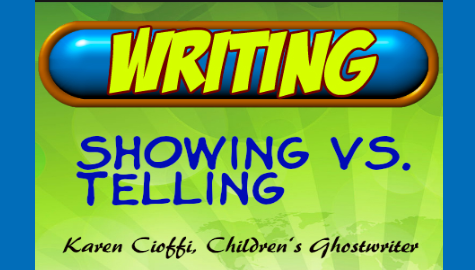I’ve written about showing and telling before, but it’s such an important topic that more information is always helpful.
Writing is an ongoing adventure… always something to learn, tweak, and hone. A long while ago, I wrote a children’s story and found I still had a bit of showing in it, noted by writing coach and author Suzanne Lieurance, who gave it a critique.
I toyed with the idea of submitting my story as a picture book (PB). But after some consideration, I decided it would work better as a children’s magazine article, unless I wanted to rewrite it specifically for a PB.
Anyway, I noticed that as I write–and this goes for most of us–my thoughts precede my reading and writing ability, so I don’t catch my own errors. This happens because I know what I wrote and what I intend to convey. This makes it almost impossible for a writer to edit her own work. You can get close, but as the saying goes, Almost Doesn’t Cut It.
What do I mean? Well, let’s look at a simple sentence:
In a daze, Pete stumbled to his feet.
While this isn’t the exact sentence in my story, it is similar. I revised my article, reread it numerous times, and didn’t notice that “in a daze” is telling, not showing. And, what’s the KEY to writing in today’s fast-paced, no time to waste world? FOCUS AND TIGHT WRITING.
In fact, the fast-paced reader of today is getting even more impatient and ready to move on in the blink of an eye. So, we need to take this into account in our writing and marketing.
Okay, back to the focus of the article…
So, how do we change the above sentence into a showing-only sentence?
Dazed, Pete stumbled to his feet.
It’s really simple when you are able to actually read what is written rather than already know what you intended. If you have the word count, you could remove the word ‘daze’ and add more showing.
What are the important tips to take away?
1. Make sure you are part of a critique group. These groups can be super-helpful. If you’re a children’s writer, you can find one in the forum of the Society of Children’s Book Writers and Illustrators (SCBWI). There’s a yearly fee, but it’s worth the investment.
2. Belong to writing groups in the genre you write. Usually, you can ask questions and get answers.
3. If your budget can afford it, get at least one grammar editing tool. I use Grammarly and ProWritingAid. They may not specifically tell you you’re ‘telling’, but they will tell you if you’re using passive writing.
Just be careful not to depend on it solely. I’ve had both tools miss an ending dialogue punctuation on a client’s work.
For more on showing versus telling (the article has been updated):
https://karencioffiwritingforchildren.com/2017/05/14/writing-showing-vs-telling/
4. Do not submit your work to a publisher or agent before you’ve carefully edited and proofread it. It’s important to have someone who knows how to write give you a review or critique of your manuscript (if you’re not already a part of a critique group).
5. If it’s in your budget, have it professionally edited.
I hope these tips help you boost your showing and reduce your telling.

Writing Children’s Books – Genre Differences
Writing a Fiction Story – Walking Through Walls Backstory
Learning to Write for Children – It’s More Than Just ABC

I’m a working children’s ghostwriter, rewriter, and coach. I can help turn your story into a book you’ll be proud to be the author of, one that’s publishable and marketable.
OTHER HELP I OFFER:
HOW TO WRITE A CHILDREN'S FICTION BOOK
A DIY book to help you write your own children’s book.
FICTION WRITING FOR CHILDREN eCOURSE
4-Weeks / 8 Sections Guided Self-Study Program
WRITERS ON THE MOVE SELF-PUBLISHING SERVICE
Self-publishing help for children’s authors
(Picture books and chapter books)
You can contact me at kcioffiventrice@gmail.com.


2 thoughts on “Are You Showing or Telling?”
Comments are closed.